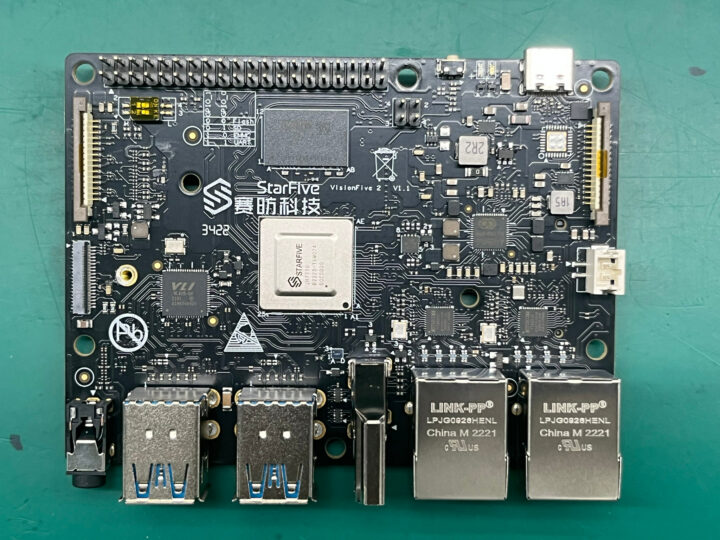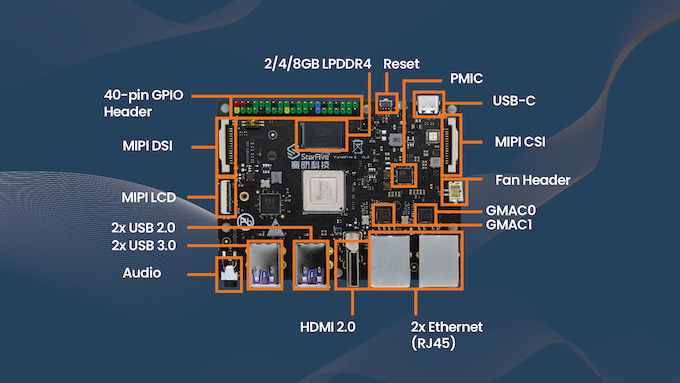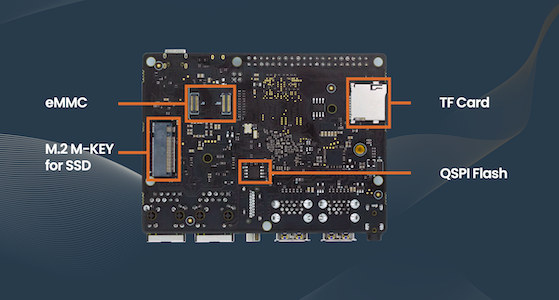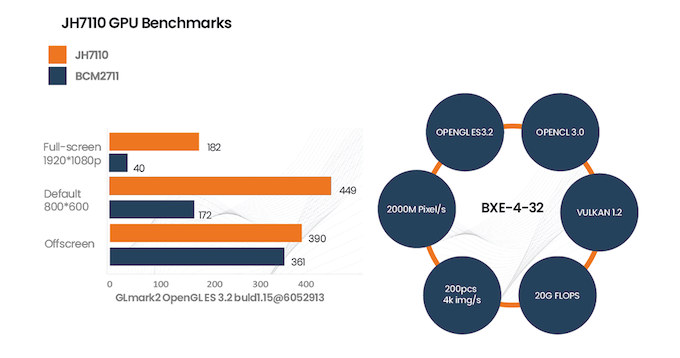As expected, StarFive has officially unveiled the JH7110 quad-core RISC-V processor with 3D GPU and the VisionFive 2 SBC. I just did not expect the company to also launch a Kickstarter campaign for the board, and the version with 2GB RAM can be had for just about $46 for “early birds”.
The VisionFive 2 ships with up to 8GB RAM, HDMI 2.0 and MIPI DSI display interfaces, dual Gigabit Ethernet, four USB 3.0/2.0 ports, a QSPI flash for the bootloader, as well as support for eMMC flash module, M.2 NVMe SSD, and microSD card storage.
- SoC – StarFive JH7110 quad-core 64-bit RISC-V (SiFive U74 – RV64GC) processor @ up to 1.5 GHz with
- Imagination BXE-4-32 GPU supporting OpenGL ES 3.2, OpenCL 1.2, Vulkan 1.2
- 4Kp30 H.265/H.264 video decoder
- 1080p30 H.265 video encoder
- System Memory – 2GB, 4GB, or 8GB LPDDR4
- Storage – MicroSD card slot, eMMC flash module socket, M.2 M-Key socket for NVMe SSD, QSPI flash for U-boot
- Video Output
- HDMI 2.0 port somehow limited up to 4Kp30
- 4-lane MIPI DSI connector up to 2Kp30
- 2-lane MIPI DSI connector
- Camera I/F – 2-lane MIPI CSI camera connector up to 4Kp30
- Audio – 3.5mm audio jack
- Networking – 2x Gigabit Ethernet RJ45 ports
- USB – 2x USB 3.0 ports, 2x USB 2.0 ports
- Expansion – 40-pin GPIO color-coded header
- Misc – Reset button, fan header, debug header
- Power Supply
- Via USB-C port with PD support up to 30W
- 5V DC via GPIO header (3A+ required)
- PoE via additional module
- On-board PMIC
- Dimensions – 100 x 72 mm (Pico-ITX form factor)
StarFive will provide Debian and Fedora operating systems images for the board. The company also provides some interesting benchmarks showing the CPU performance is actually higher than Cortex-A55-based chips, but not quite up to the performance of the Broadcom BCM2711 quad-core Cortex-A72 processor used in the Raspberry Pi 4.
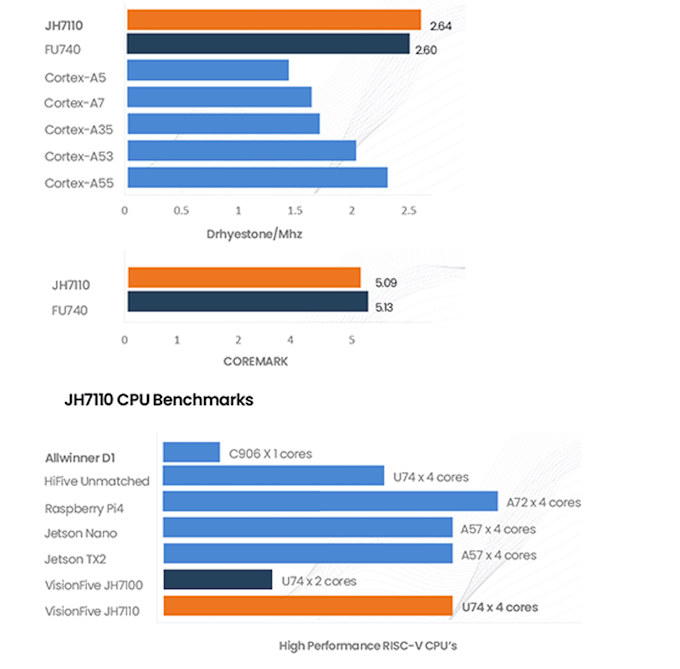
While the selection of an Imagination GPU will make some disappointed considering the company’s history with regard to open-source, StarFive has made sure to select a GPU who performance puts the VideoCore VI to shame…
There are several options to get the board. The “Super Early Bird” comes with 4GB for only $49, but one of the Ethernet ports is limited to 10/100M. The early bird and Kickstarter special are the same and match the specifications listed above (include 2x GbE) but at different prices with 2GB, 4GB, or 8GB RAM options.
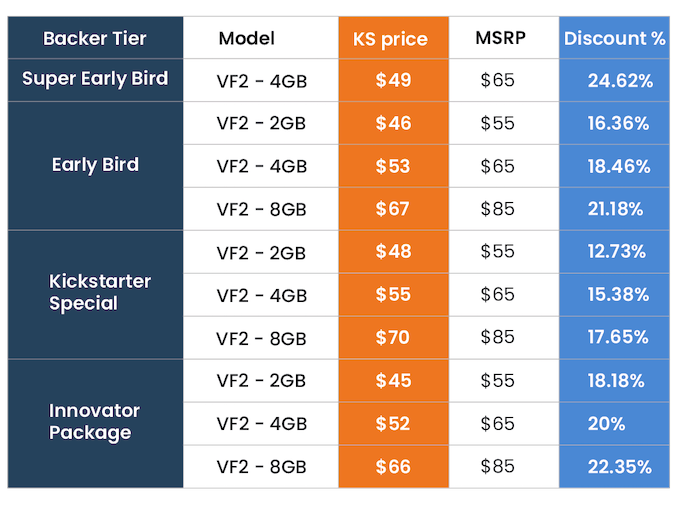
The Innovator Package offers the best price per unit, but you’d need to pledge over $10,000 for a bundle of 140, 180, or 200 boards.
The VisionFive 2 rewards with 4GB RAM are expected to ship in November 2022, while the 2GB and 8GB models should come out in February 2023, so you may want to take this into account. Shipping adds about $9 so it’s not excessive, and the StarFive VisionFive 2 SBC should be the first truly affordable, capable RISC-V Linux SBC on the market.

Jean-Luc started CNX Software in 2010 as a part-time endeavor, before quitting his job as a software engineering manager, and starting to write daily news, and reviews full time later in 2011.
Support CNX Software! Donate via cryptocurrencies, become a Patron on Patreon, or purchase goods on Amazon or Aliexpress


